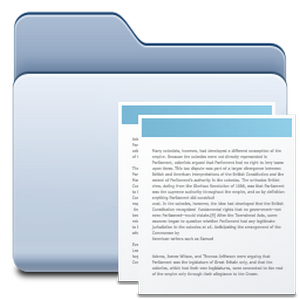 Unless told not to, you should never submit your resume (via fax, e-mail, etc.) to an employer without sending a Cover Letter. A cover letter informs the employer of the type of position you’re seeking and how you are qualified for that position.
Unless told not to, you should never submit your resume (via fax, e-mail, etc.) to an employer without sending a Cover Letter. A cover letter informs the employer of the type of position you’re seeking and how you are qualified for that position.
It’s important that your cover letter highlight the aspects of your experience, skills and education that are most useful to the potential employer. When drafting your cover letter, use recognition keywords that match the description in the job posting. Doing so will increase your chances of getting selected for an interview.
Just as important, when submitting your cover letter, be sure to follow the employer’s instructions on how or how not to submit the letter. Not following the employer’s instructions can terminate your chances for a job right away.
Sample Cover Letter
* Click here to view a sample cover letter.
5 Cover Letter Tips
1) No spelling errors or typos. User your computer’s “Spell Check”, but don’t solely rely on it. Read your Cover Letter once or twice and check for errors yourself.
2) Your Cover Letter should be addressed to a live person. Avoid using “Dear Hiring Manager” or the like. Find the name of the company’s hiring manager or recruiter by logging on to the company’s website or calling their main phone number and asking the receptionist for the name and title of their corporate recruiter. In the Cover Letter always use the person’s formal title (ex: “Mr.,” “Ms.” or “Mrs.”).
3) Be sure to state which job you are applying for in the very first paragraph and include other specific details such as a job ID # if one was provided. Also, state where you heard about the job opening. Hiring managers are responsible for multiple openings within their organization and must be able to determine which job you are applying for. If you were referred to the company by an employee, be sure to mention this in your letter as many companies have employee referral programs.
4) When writing the Body of your letter, keep the requirements of the job in mind and address them specifically. Remember, it’s about “what you can do for the company”.
5) If the employer is requesting that you state the salary that you are looking for, you can state something like, “My salary requirement is negotiable and dependent upon such factors as benefit structure, responsibility and advancement opportunity.”
Cover Letter Format
Opening Paragraph – Clearly state why you are writing, name the position or type of work you’re exploring and, where applicable, how you heard about the person or organization.
Middle Paragraph(s) – Explain why you are interested in this employer and your reasons for desiring this type of work. If you’ve had relevant school or work experience, be sure to point it out with one or two key examples; but do not reiterate your entire resume. Emphasize skills or abilities that relate to the job. Be sure to do this in a confident manner and remember that the reader will view your letter as an example of your writing skills.
Closing Paragraph – Reiterate your interest in the position, and your enthusiasm for using your skills to contribute to the work of the organization. Thank the reader for his/her consideration of your application, and end by stating that you look forward to the opportunity to further discuss the position. Lastly, remember to sign the cover letter.
All in all, your Cover Letter should be brief, easy to read, and always include your full name, address, phone number and email address (in case your Cover Letter becomes separated from your resume).

